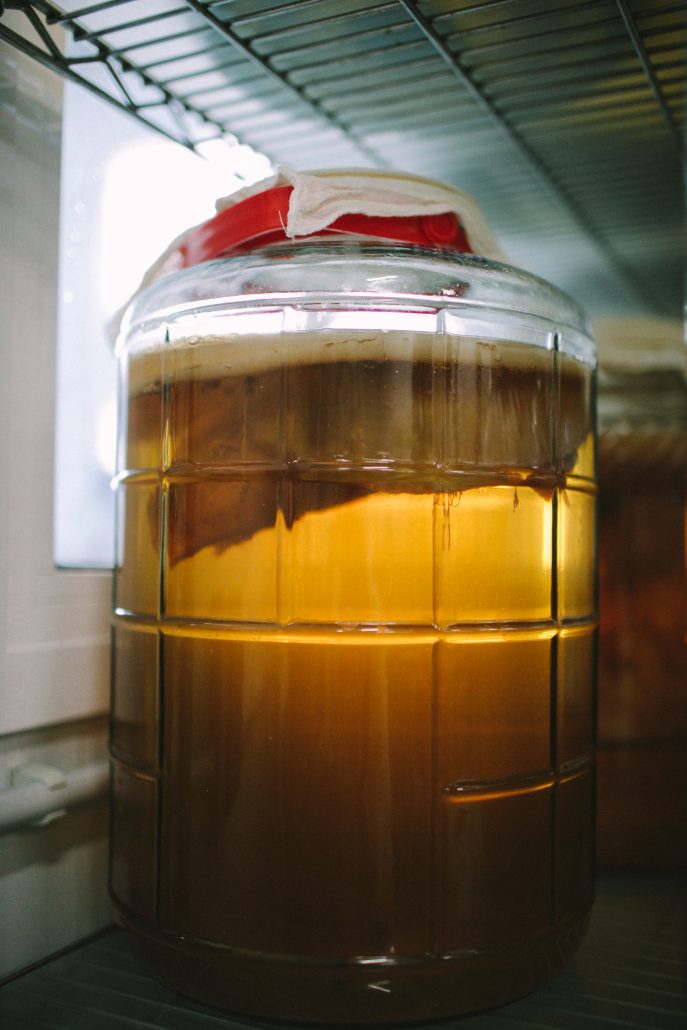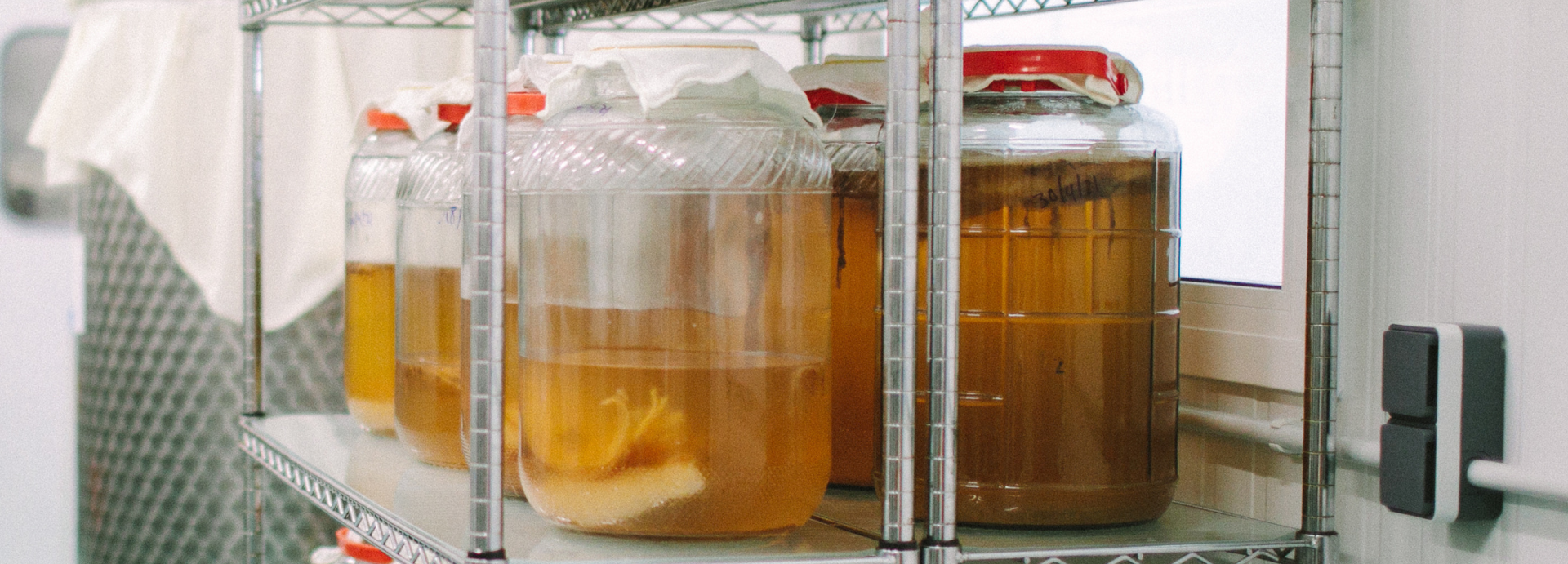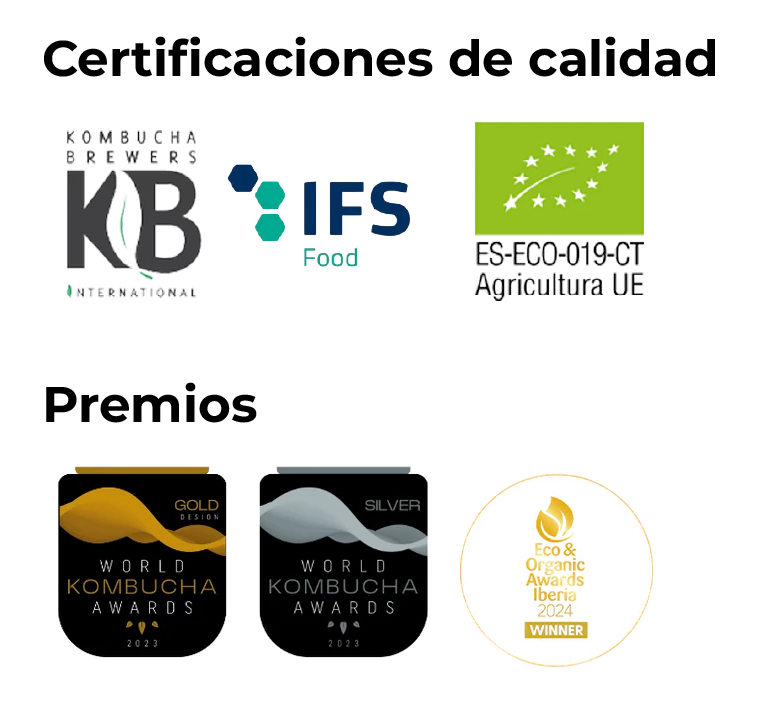What is the kombucha SCOBY?
"Kombucha tea is the result of the fermentation of a tea infusion, generally green or black, to which microorganisms, known as SCOBY, are added, which make it possible for the process to be carried out." And you, you're left thinking, okay, but what the hell is this SCOBY thing?
Let's go by parts. Deep down it is very simple. In the same way that to make homemade yogurt, you need yogurt, or to make sourdough bread, you need a starter, sourdough or sourdough ; To make kombucha you need a starter that makes it possible to start the process.
And in the case of kombucha, what is this starter called? It is known as SCOBY, an acronym for Symbiotic Culture of Bacteria and Yeast . That is, a colony of microorganisms, in this case lactic and acetic acid bacteria and yeasts, that act symbiotically - that is, helping each other - to carry out a task that is as arduous as it is incredibly magical. The transformation of a simple and plain sugary infusion into a drink loaded with health, with organic acids, natural probiotics, vitamins, minerals and enzymes. Our favorite drink. The kombucha.
What does a SCOBY look like?
The best way to understand what a SCOBY is is to see it live, but we can try to describe it to you. The SCOBY, also known as tea fungus or kombucha mother, is a biofilm (or biofilm) with a gelatinous texture made up of cellulose or a microbial mat. It is usually found floating in the free space left in the container where we store the kombucha. The bacteria Komagataeibacter xylinus is responsible for producing this cellulose.

The SCOBY forms gradually and forms layers or films. During the growth process, it not only hosts the microorganisms that are working on fermentation, but, thanks to its ability to absorb liquids, it also includes a small amount of the previous product. One of its main qualities is that it adapts to the surface of the space that houses it. There are some theories that suggest that, in addition to intervening directly in the fermentation of a simple infusion, this curious gelatinous mass is responsible for sealing the production to prevent the entry of dangerous organisms: dirt, dangerous bacteria or microbes. Under constant analysis by scientists, it is currently being investigated whether there is an optimal proportion of SCOBY to guarantee an excellent final product. Likewise, the peculiarities given by the length of fermentation are also being analyzed. According to this specific study, the longer the fermentation time, the more gluconic acid it contains and the better the flavor of the resulting product.
What does the SCOBY contain?
Different species of bacteria and yeast can be found in a SCOBY. Acetobacter, Glucanobacter, Komagataeibacter, Lactobacillus, Saccharomyces, Zygosaccharomyces, Komagataeibacter xylinus. These microorganisms feed on the sugar that we add to the initial tea infusion. In this way, they break down sugars to convert them into organic acids and carbon dioxide. During fermentation, the concentration of probiotics also increases, making our brains (first, intestines and second brain) super happy.
In order for the SCOBY to work and be productive (that is, to make good kombucha), a few conditions must be met. Among others, it must have sufficient levels of oxygen, a pH below 4 and temperatures between 20 and 30º C. In order to guarantee that the pH at the beginning of fermentation is below 4, it will also be necessary to have a sufficient amount of starter. , about 20%.
What is kombucha starter?
The starter is nothing more than sufficiently fermented kombucha, and therefore acidic, which allows, together with the SCOBY, to start the fermentation of a new batch of sweetened tea. It is a cocktail rich in organic acids and overpopulated with yeasts and bacteria. The organic acids will be responsible for starting the fermentation with a sufficiently low pH (generally below 4), which will guarantee that our culture is not damaged by the appearance of bacteria that are not typical of our kombucha. The yeasts and bacteria will be responsible for fermenting the new batch of sweetened tea to convert it into kombucha in a few days.
To obtain a good fermentation we need the SCOBY and the starter .
Once all the requirements have been met, all that remains is to let it do its job. No stress. A lot of calm and patience. In 10 days, the liquid resulting from fermentation can already be considered kombucha. Longer fermentation times achieve higher levels of organic acids and amino acids.
If you want to know how to make your own kombucha, in this article you will find all the information. Happy brewing!










